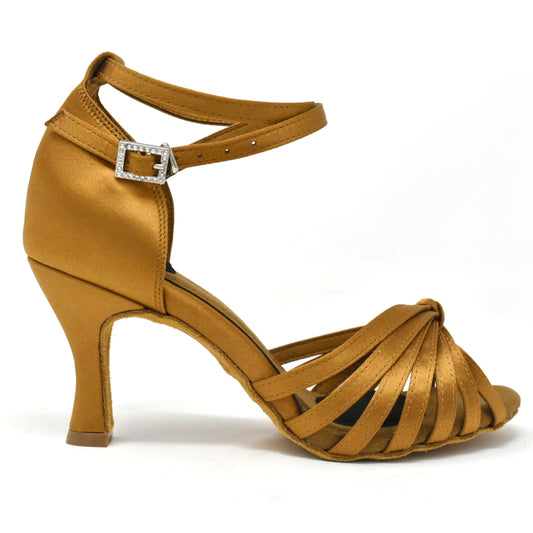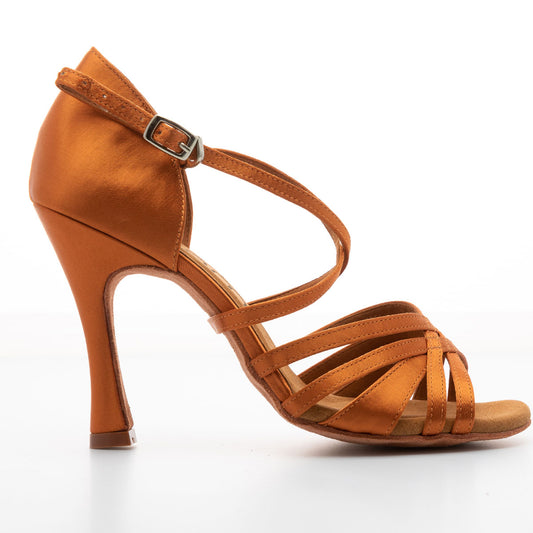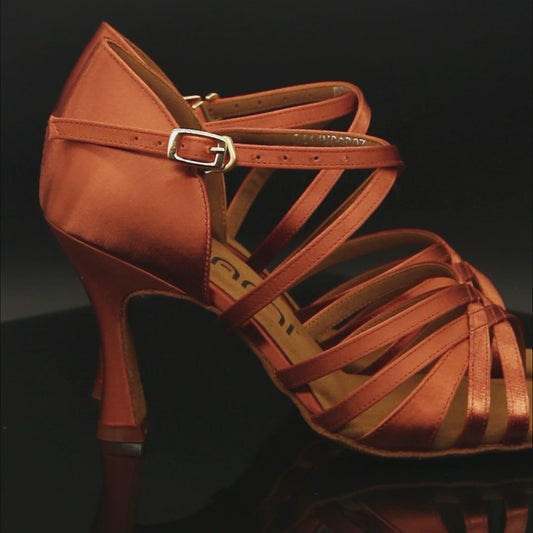
PU leather - you know it as faux leather, vegan leather, synthetic leather, etc. Here at Yami, it's our main material of choice for our massive selection of Latin dance shoes. Why?
Apart from being durable and beautiful, PU leather is flexible but it never stretches out the same way as genuine leather.
How PU Leather is Made
PU stands for polyurethane, a type of thermoplastic polymer that’s layered over a textile base. PU leather can be used in a variety of applications, including furniture, bags, and other goods that are traditionally made with animal leather. 100% PU leather is vegan with zero animal byproducts. On the other hand, bi-cast leather has actual leather integrated within the PU coating so it’s definitely not vegan.
The Problem with Genuine Leather...
Genuine leather is a terrific shoe material but worn over time, the material stretches to a point when the wear becomes too loose. If you're a dancer, the loose wear is problematic. It just increases the risk of injuries.
A new pair of leather Latin dance shoes may provide a snug fit now but over time, it will become so loose, you have no other choice but to get a new one. Have you tried dancing while wearing loose shoes? It's uncomfortable!

On the other hand, PU leather is flexible but it won’t stretch out to a point where the shoes become unusable. The fit remains snug so you don’t end up tripping all over the dance floor. Because of the nice fit, faux leather Latin dance shoes will get a lot of wear for a long, long time.
Also, let’s not forget how cruel the leather industry is to the animals and the environment. We’ve already discussed this topic extensively in our blog posts but if you need a refresher, you can read it here.
Of course, PU leather is not a perfect material - it has its advantages and disadvantages. If you’d like to know more about the pros and cons of faux leather, continue reading below:
PU Leather Pros
Flexible: The material is quite soft but very resilient. With proper care, Kizomba dance shoes or Zouk dance shoes made with PU leather will last for a long, long time.
Affordable: Compared to real leather, PU leather is the more affordable choice. That’s not to say the quality is sub-par. In fact, many PU leather goods are high in quality. It’s just a matter of finding a brand that provides exceptional quality goods made from faux leather - like Yami dance shoes!

Easy to Maintain: That’s right, PU leather is so easy to maintain. It looks like the real thing, feels like the real thing but is quite resistant to everyday wear and tear. Just wipe clean or a good brush and you’re good to go. That’s because faux leather has a water-resistant surface.
PU Leather Cons
Less Durable than Genuine Leather: the reason why leather is so expensive is that the material wears like iron. Compared to real leather, faux leather isn’t as durable. But you don’t need to baby your vegan leather dance shoes at all. They just need the same TLC that you give to your leather goods and they should last you a long time.
Non-Breathable Material: PU leather is made by layering a plastic-coated fake leather over a fabric base. It doesn’t have pores like animal hide so it’s not a breathable material. But as long as the inner lining is made from a breathable material, there’s no need to worry about moisture buildup.
Strong Chemical Smell: Some people like the smell of genuine leather, others don’t. PU leather has a strong chemical smell, something that may be off-putting to some. It’s one con that will depend on the person wearing the product. The smell does not affect the performance of the material and it does fade in time.
Although we have a couple of Latin dance shoes crafted from fine leathers, most of the shoes in our collection are made with faux leather. We are fully committed to bringing you high-quality products so all of our materials are sourced from the best places in the world. You can be sure that your Yami dance shoes will last you years!







